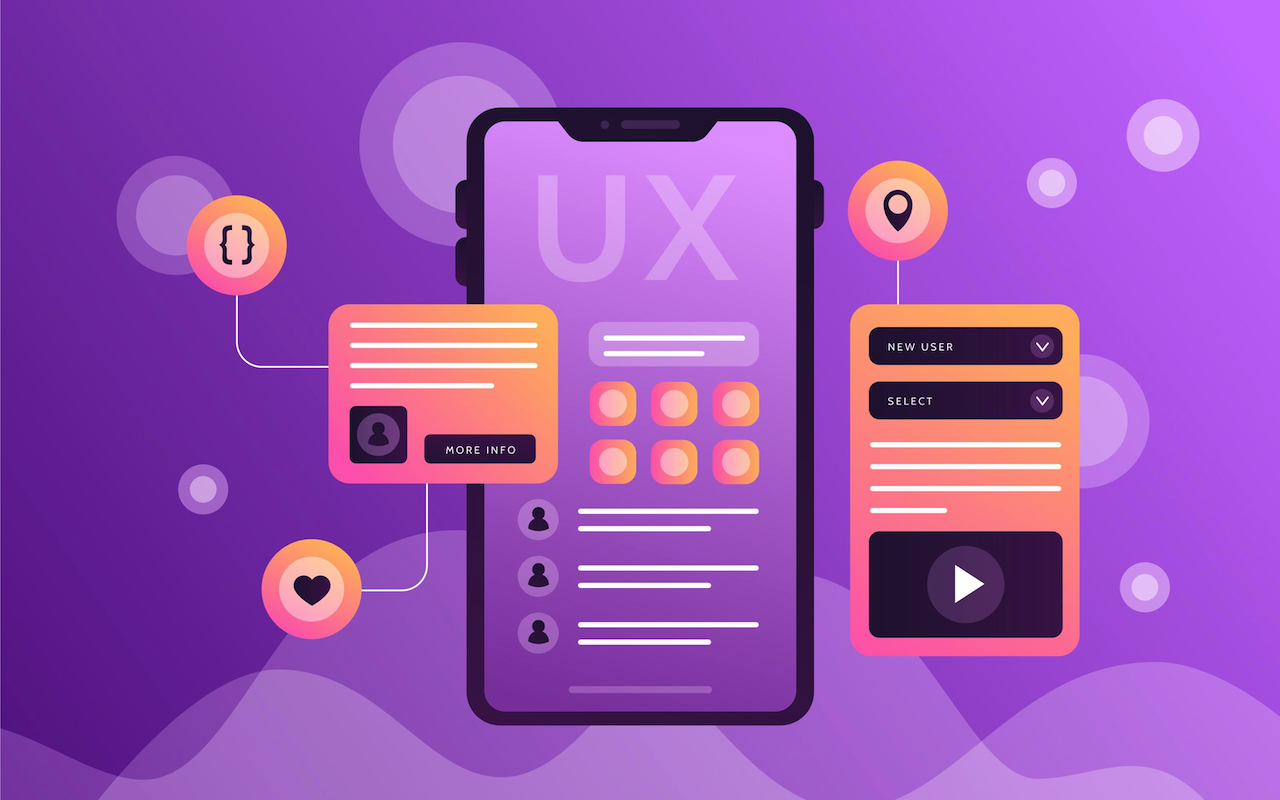
That beautiful product page you spent weeks perfecting? Half your visitors never even see it. Poor UX design can reduce eCommerce conversions, with shoppers leaving your site for a hundred tiny reasons. Menu confusion, slow load times, and complicated checkout process all add up to reduced sales.
These mistakes follow predictable patterns and fixing them is simpler than you think. Whether it's mobile usability, trust signals, or navigation flow, small tweaks can increase conversions. This blog walks through the most common UX pitfalls and how to avoid them, so your store actually works for you.
Why UX Matters in eCommerce Web Design
Let's be honest, we've all abandoned an online store because something felt "off." Maybe the buttons were too small, the checkout process was confusing, or the site just looked untrustworthy. That right there? That's UX, or lack of it, determining whether you make a sale or lose a customer for good.
Good UX is like a helpful store assistant. IIt smoothly guides visitors from “just browsing” to “take my money.” Bad UX? That’s like locking all your products behind glass with no staff in sight.
Here's why UX makes or breaks your online store:
- You Lose Customers Fast: People judge your store in seconds. If they can't find what they need immediately, they're gone. Simple navigation keeps them shopping instead of bouncing.
- Mobile Shops Need Mobile Thinking: Most shopping happens on phones now. If your site makes people pinch to zoom or search for buttons, they’ll simply leave for a store that gets it right.
- Checkout = Make or Break: Ever filled a cart then left because the checkout asked for too much? That's UX failure costing real sales. The smoother the process, the more completed orders.
- Trust Isn't Optional: Would you buy from a site that looks outdated or hides contact info? Professional design and clear policies make customers comfortable enough to make a purchase.
- Happy Customers Come Back: People remember easy shopping experiences. Good UX doesn't just lead to one sale; it created returning customers who spend more over time.
The bottom line? UX isn't about making your store "pretty." It's about removing every little frustration that stands between a visitor and their purchase. Get it right, and you're not just selling products; you're creating customers who want to come back. Strong eCommerce website design services focus on building seamless, user-friendly experiences that drive conversions and long-term loyalty.
Common UX Mistakes to Avoid in eCommerce Web Design
Some of the top UX mistakes you need to avoid for your eCommerce store include:
1. Confusing Navigation
You know that feeling when you walk into a messy store and can't find anything? That's exactly how shoppers feel with confusing website navigation. If your menu looks like a jumbled mess or categories don't make sense, people will leave faster than you can say "checkout." Keep it simple. Clear labels and logical organization help shoppers find what they need without getting frustrated.
Here's the reality: no one wants to play detective when shopping online. If visitors can't find products in three clicks or less, they're gone. Try this: ask a friend to find something on your site. If they struggle, your navigation needs work. Remember, every extra click is another chance for customers to abandon their cart.
2. Slow Website Load Time
Imagine waiting for a slow website to load . You've probably closed the tab in frustration before. In online shopping, speed matters more than you think. If your site takes more than 3 seconds to load, you've already lost half your potential customers. Mobile users suffer the most, especially when they're trying to shop on the go.
The truth hurts: slow sites don’t just lose sales, they hurt your brand reputation too. Customers remember bad experiences. Simple fixes like compressing images and reducing unnecessary plugins can make a huge difference. If your site feels sluggish, it’s not just annoying—it’s costing you real money every single day.
3. Ignoring Mobile Users
Try browsing your own store on your phone right now. If you find yourself pinching to zoom or struggling to tap tiny buttons, you've got a problem. More than 60% of online shopping happens on mobile devices now. If your site is not mobile optimized, you're basically turning away most of your potential customers.
Here’s what most store owners don’t realize: mobile users are impatient. If they can’t easily browse and buy with one thumb, they’ll find a store that lets them. Google also penalizes sites that aren’t mobile-friendly in search rankings. Responsive design isn’t optional anymore; it’s essential for survival in ecommerce.
4. Complicated Checkout Process
You've got your items in the cart, excited to check out. Then boom! Ten form fields, forced account creation, and surprise shipping costs. Sound familiar? This is why 70% of shoppers abandon their carts. The checkout should be the easiest part, not a frustrating obstacle course.
Keep it simple. Guest checkout, autofill options, and clear progress bars work wonders. Every extra step is another chance to lose the sale. If your checkout feels like filing taxes, you’re doing it wrong. Customers want to pay quickly, not jump through hoops.
5. Weak Trust Signals
Would you hand your credit card to a shady-looking website? Neither will your customers. Missing contact info, no reviews, and sketchy design scream "scam." Trust is everything in online shopping. You've got to earn it before asking for payment.
Simple fixes make a big difference. Display security badges, customer testimonials, and clear return policies. A real phone number and address help too. Remember, if shoppers don’t trust you, they’ll find someone they do trust, probably your competitor.
6. No Search or Poor Filtering Options
Ever tried finding a specific black dress in a store with no signs or sections? That's how shoppers feel without proper search and filters. When users can't quickly narrow down options, they'll leave faster than you can say "conversion rate."
Good filtering solves this. Size, color, price range make it easy to find exactly what they want. And if search shows “no results,” suggest alternatives. Your job is to help customers find products, not hide them. The easier you make shopping, the more you’ll sell.
7. Overuse of Pop-Ups
You land on a site and within seconds, there's a pop-up asking for your email. Then another one appears offering a discount. It’s too much, too fast. Pop-ups can be helpful, but when they interrupt the browsing experience, they just feel annoying.
Timing and relevance matter. A well-placed pop-up after some engagement can work. But stacking them back-to-back, especially before the user has even explored, pushes people away. Less noise, more value is the key.
8. Inconsistent Branding
One page feels sleek and modern. Another looks outdated or uses a different tone. When branding isn’t consistent, it confuses users. It makes the site feel unprofessional, like it was pieced together by different teams with no clear direction.
Strong branding builds trust and makes the experience feel cohesive. From colors and fonts to button styles and voice, it should all feel like it belongs together. When branding flows smoothly, users feel more confident in your store.
9. Lack of Product Information and Visuals
When you're about to buy something online, you want the full picture, literally. If there’s only one blurry image and a vague description, it’s hard to trust the product. People need details before they feel confident enough to click “buy.”
Clear photos, multiple angles, sizing info, specs all matter. Add real reviews and even videos if possible. The more you answer upfront, the fewer doubts users have. And fewer doubts mean more conversions.
Best UX Practices for eCommerce Web Design
Great eCommerce UX is about making shopping effortless. When your site helps rather than hinders, customers buy more and come back often. Here's how the pros do it:
- Mobile-First Design: Small screens need big buttons and simple layouts. Test every page on actual phones.
- Lightning-Fast Loading: Compress images, minimize code, and use caching. Every second saved boosts sales.
- Intuitive Navigation: Categories should make sense to shoppers, not just your team. Use mega menus for large inventories.
- One-Page Checkout: Reduce form fields and offer guest checkout. Fewer steps mean fewer abandoned carts.
- High-Quality Product Visuals: Multiple angles, zoom function, and lifestyle shots replace the "touch and feel" experience.
- Smart Search and Filters: Auto-suggestions and layered filters help customers find exactly what they want fast.
- Clear Trust Signals: Display security badges, reviews, and contact info prominently. No one buys from strangers.
- Consistent Branding: Same colors, fonts, and tone everywhere. Builds recognition and professionalism.
- Strategic CTAs: "Add to Cart" buttons that stand out. No confusing or hidden next steps.
Let’s Summarize
Think about the last time you shopped online. What made you stay on a site or leave? The difference often comes down to little things: how easy it was to find products, whether the checkout felt smooth, and if the site worked well on your phone.
Good UX means removing every complexity that gets between a customer and their purchase. Fix the basics first—speed up your site, simplify navigation, and make checkout effortless. Test it yourself on different devices. Better yet, ask a friend to try buying something. You’ll spot issues quickly.
Small improvements add up. A faster, clearer shopping experience doesn’t just boost sales; it builds trust. And when customers trust your store, they come back. That’s how you turn casual browsers into loyal buyers.
Featured Image by Freepik.
Share this post
Leave a comment
All comments are moderated. Spammy and bot submitted comments are deleted. Please submit the comments that are helpful to others, and we'll approve your comments. A comment that includes outbound link will only be approved if the content is relevant to the topic, and has some value to our readers.

Comments (0)
No comment